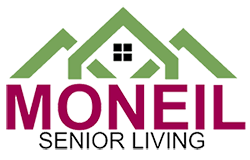
08 Nov Top Financial Strategies for Assisted Living ROI

To optimize ROI in assisted living, focus on strategic market dynamics and location. Choose areas with growing older populations near medical facilities. Enhance operational efficiency by leveraging technology for streamlined operations, like telehealth and data analytics. Diversify services and implement tiered pricing to boost income and appeal to varied resident needs. Use targeted digital marketing and form referral partnerships with healthcare providers for increased engagement. Finally, maintain financial stability with professional advice and track success using key performance metrics. By embracing these strategies, you’ll find further insights to enhance your investment.
Key Takeaways
- Analyze market dynamics to strategically select locations with a growing older population and favorable economic factors.
- Implement technology solutions to enhance operational efficiency and optimize resident care, contributing to cost savings and higher ROI.
- Diversify revenue streams by introducing specialized services and wellness programs tailored to resident needs.
- Develop pricing strategies based on market research and implement tiered pricing to attract a wider range of residents.
- Track financial performance metrics and use data-driven decisions to ensure profitability and regulatory compliance.
Understanding Market Dynamics
Understanding market dynamics is critical when you’re considering investments in assisted living facilities. As the senior population is projected to reach 71.5 million by 2030, market analysis becomes essential for identifying lucrative investment opportunities. The aging baby boomers greatly influence demand in the multifamily market, which includes assisted living. By analyzing demographic trends, you can pinpoint areas with a high demand for assisted living, focusing on regions where the older population is increasing. This data-driven approach helps optimize occupancy rates and boost profitability.
Examine income levels and local demographics to discern where your investment can prosper. High-income areas might offer more financial stability, while proximity to medical centers can enhance a facility’s appeal. Recognizing these variables allows you to tailor your strategy to market demands, ensuring a higher return on investment.
Moreover, understanding market dynamics involves anticipating shifts in the industry. By staying informed about changes in healthcare policies or technological advancements, you can adjust your investment strategy to remain competitive. The goal is to use detailed market analysis to seize opportunities before they become apparent to others. This proactive approach guarantees you’re not only reacting to market changes but also strategically positioning your investments for long-term success.
Strategic Location Selection
Having a firm understanding of market dynamics is just the beginning; the next step is selecting the right location for your assisted living facility. This strategic approach involves analyzing market trends to identify areas with a high concentration of seniors. With projections indicating that 1 in 5 Americans will be over 65 by 2030, targeting regions poised for demographic shifts is vital. Prioritize locations near hospitals and medical centers to guarantee residents have access to essential healthcare services, thereby enhancing the appeal of your facility. Additionally, consider the increasing interest rates which may impact borrowing costs and influence the affordability of developing new facilities. To achieve high occupancy rates, focus on areas with a growing older population. This not only drives sustained demand for senior housing but also contributes to resident satisfaction and overall profitability. Thoroughly examine local economic factors and housing market trends, as these elements can greatly influence your facility’s success. A well-chosen location isn’t just about current trends; it’s about forecasting future demand and ensuring long-term viability.
Enhancing Operational Efficiency
To significantly enhance operational efficiency in assisted living facilities, adopting technology solutions like management systems and telehealth services is vital. These technologies streamline operations, leading to significant cost reduction and enhanced resident care quality. Management systems optimize staff schedules, guaranteeing that resources are allocated effectively and efficiently. By automating medication management and resident care plans, you minimize human error and improve consistency in care delivery. Additionally, by integrating sophisticated data analytics, facilities can optimize their operational strategies, enhance tenant satisfaction, and reduce costs. Implementing telehealth services allows you to provide high-quality medical consultations without the logistical challenges and costs associated with physical visits. This not only boosts operational efficiency but also enhances the resident care experience by offering timely medical attention.
Data-driven decisions are essential in maximizing ROI. Advanced management systems provide valuable insights into your facility’s operations, helping you identify areas for improvement. You can track performance metrics and adjust strategies to guarantee smooth and profitable facility operations. Effective operational management directly contributes to cost reduction by eliminating waste and redundancies.
Ultimately, operational efficiency plays a significant role in elevating both the quality of care for residents and the financial performance of your facility. By leveraging technology, you position your assisted living facility for sustainable success and long-term profitability.
Expanding Service Offerings
Consistently expanding service offerings in assisted living facilities can greatly enhance both the appeal and profitability of your establishment. By integrating specialized services like memory care or physical therapy, you can attract residents with specific needs, boosting your occupancy rates. This targeted approach not only fills your facility but also diversifies your revenue streams, making your business more resilient to market fluctuations.
Offering a variety of wellness programs and social activities can significantly improve resident satisfaction. When residents are content, they’re more likely to stay longer, reducing turnover rates. Additionally, satisfied residents often share positive experiences, enhancing your facility’s reputation and drawing in new clients. Tailoring care plans to meet individual needs demonstrates your commitment to quality of care, setting you apart from competitors and building trust with current and potential residents.
Data supports that expanding service offerings not only improves resident outcomes but also increases profitability. Facilities that invest in diverse services see notable improvements in their financial performance. By continuously evaluating and updating your service menu, you guarantee your facility remains competitive and financially robust. Ultimately, this strategy secures a sustainable future for your business while delivering exceptional care.
Effective Pricing Strategies
As you enhance your service offerings, maintaining effective pricing strategies becomes a vital component in maximizing your assisted living facility’s ROI. Start by incorporating thorough market research into your financial planning. Analyze local and regional pricing trends, along with occupancy rates, to set competitive and best-fit prices. Such data-driven insights can guide your pricing strategies, ensuring they align with market expectations and your facility’s unique value proposition.
Consider the impact of location, amenities, and care services on your pricing structure. Implementing tiered pricing can cater to a wide range of residents, accommodating diverse needs and budgets. By offering different levels of care and services, you can attract a broader clientele, enhancing your facility’s financial performance.
Transparency is essential. Provide clear breakdowns of costs for room, board, and additional services. This transparency builds trust with potential residents and their families, reducing uncertainties and fostering long-term relationships.
Regularly review and adjust your pricing strategies based on market dynamics, cost changes, and resident feedback. This proactive approach ensures your facility remains financially viable and competitive. Effective pricing is not a one-time task but an ongoing aspect of successful financial planning.
Marketing and Outreach Tactics
In today’s competitive landscape, effectively employing marketing and outreach tactics is crucial for enhancing your assisted living facility’s visibility and appeal. To capture the attention of potential residents and their families, implement targeted digital marketing campaigns. Data shows that personalized online ads can increase engagement rates by up to 50%, allowing you to connect with your audience more effectively. Utilize social media platforms to your advantage by showcasing your facility’s amenities, services, and resident testimonials. Platforms like Facebook and Instagram are not only cost-effective but can also reach thousands of users, creating a broader awareness of your offerings.
Building referral partnerships with local healthcare providers and senior organizations is another strategic move. Studies indicate that referrals can convert up to 70% more effectively than cold leads, making these partnerships invaluable for sustained occupancy growth. Additionally, offering virtual tours and interactive online content can greatly boost engagement. Prospective residents and their families appreciate having detailed information at their fingertips, leading to more informed decision-making. Lastly, actively participating in community events, health fairs, and senior expos allows for direct interaction with potential clients, fostering trust and expanding your facility’s reach. These combined efforts can significantly enhance your ROI.
Professional Financial Management
Managing the financial complexities of an assisted living facility requires more than just basic accounting skills. You need a strategic approach that guarantees financial stability, enhances cash flow, and adheres to regulatory compliance. Professional financial management is the key. By outsourcing these tasks to experts like ProviderCFO, you can streamline operations and focus on optimizing client care. Their shared accounting service models not only stabilize finances but also assure compliance with industry standards.
Access to professional financial advice allows you to maximize ROI and mitigate risks effectively. Financial advisors, real estate professionals, and senior living specialists offer data-driven insights that are essential for making informed strategic decisions. They help you navigate the intricate regulatory landscape, ensuring your facility remains compliant while also capitalizing on opportunities for financial growth.
Moreover, expert management can enhance budgeting accuracy, providing a clearer picture of your financial health. With precise monitoring of cash flow and strategic planning, you’re better positioned to respond to market changes and investment opportunities. This proactive approach not only secures your facility’s present but also paves the way for future success in the competitive assisted living sector.
Tracking and Evaluating Success
Professional financial management sets the stage for tracking and evaluating success in assisted living investments. To guarantee you’re reaping the best return on investment, begin by analyzing key financial performance metrics like occupancy rates, revenue growth, and operating expenses. These will give you a precise picture of your facility’s financial health. It’s essential to measure profitability and cash flow regularly, as these indicators reveal how well your investments are performing.
You’ll also want to monitor resident satisfaction, as it’s directly linked to occupancy rates and, by extension, revenue growth. Happy residents mean a thriving facility. Regularly reviewing staff retention rates and quality of care indicators will also provide insight into the operational success of your facility.
Financial tools such as budget variance analysis, profit and loss statements, and cash flow projections are invaluable for evaluating performance. Use these tools to compare your financial reports against established benchmarks. This analytical approach allows you to make informed, data-driven decisions that maximize ROI. By keeping a close eye on these metrics, you’ll be better positioned to adjust strategies and guarantee your assisted living facility remains financially healthy over the long term.
Frequently Asked Questions
How to Increase Revenue in Assisted Living?
To increase revenue in assisted living, focus on effective marketing tactics to boost occupancy rates. Develop service offerings like memory care and premium amenities to attract higher-paying residents. Implement pricing strategies that reflect the value of personalized care plans. Utilize data-driven insights to refine these approaches, ensuring they meet residents’ needs and preferences. By strategically aligning these elements, you’ll create a compelling value proposition that enhances financial performance.
How Is Most Assisted Living Care Usually Paid For?
When it comes to covering assisted living expenses, juxtapose private insurance against personal savings and government assistance. You’ll find that most families rely on a blend of these sources. Private insurance helps offset costs, but it’s your personal savings that often bridge gaps. Government assistance, like Medicaid or veterans benefits, can be a lifeline. Analyze each option’s limitations and benefits to strategically allocate your resources, ensuring your financial goals align with care needs.
Conclusion
By embracing these financial strategies, you’ll skyrocket your assisted living ROI to unimaginable heights. Dive deep into market data, choose strategic locations, and streamline operations to maximize efficiency. Expand services to meet resident needs, set competitive prices, and use targeted marketing to reach your audience. With professional financial management, you’ll deftly track and evaluate success, ensuring every decision is data-driven. Implementing these tactics is like finding a treasure trove—your ROI will thank you!

Sorry, the comment form is closed at this time.